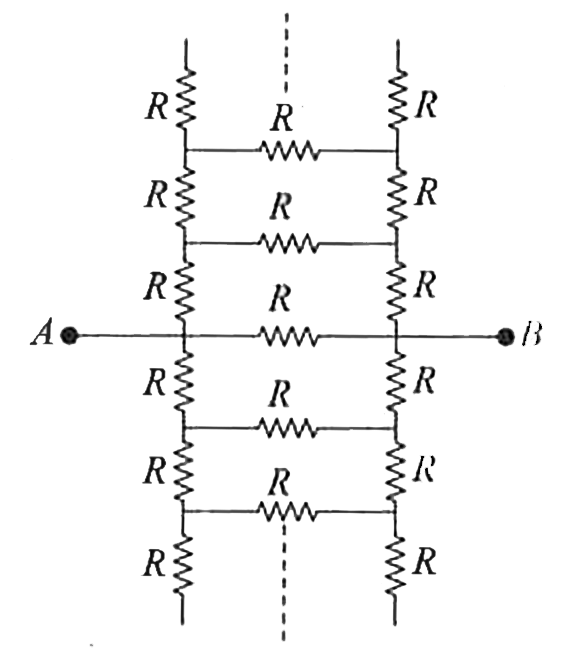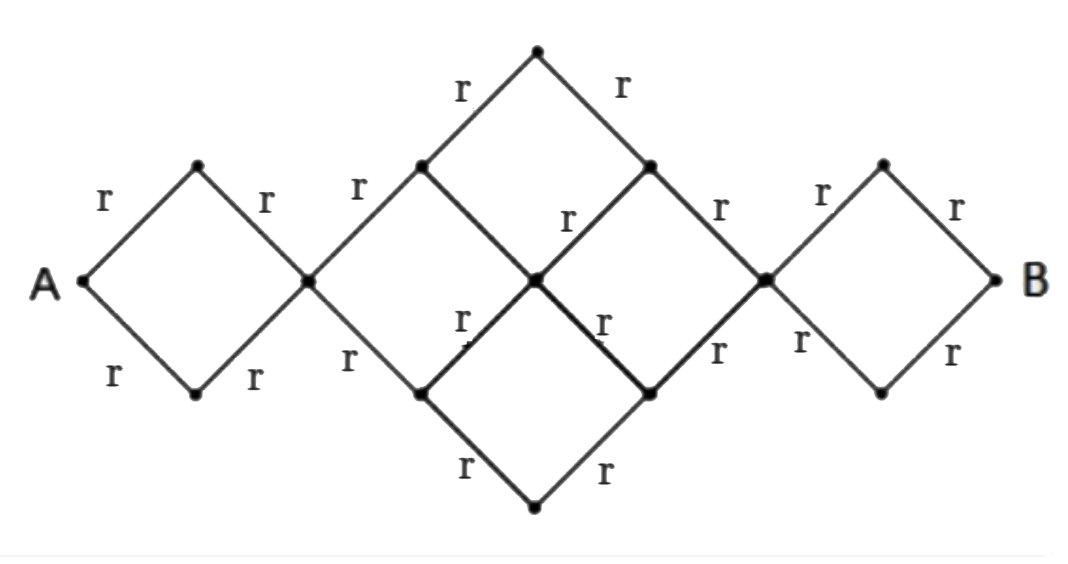In the infinite grid. If the value of r=2(√5−1)Ω. Find the Equivalent resistance ( in Ω) between the point a and c.
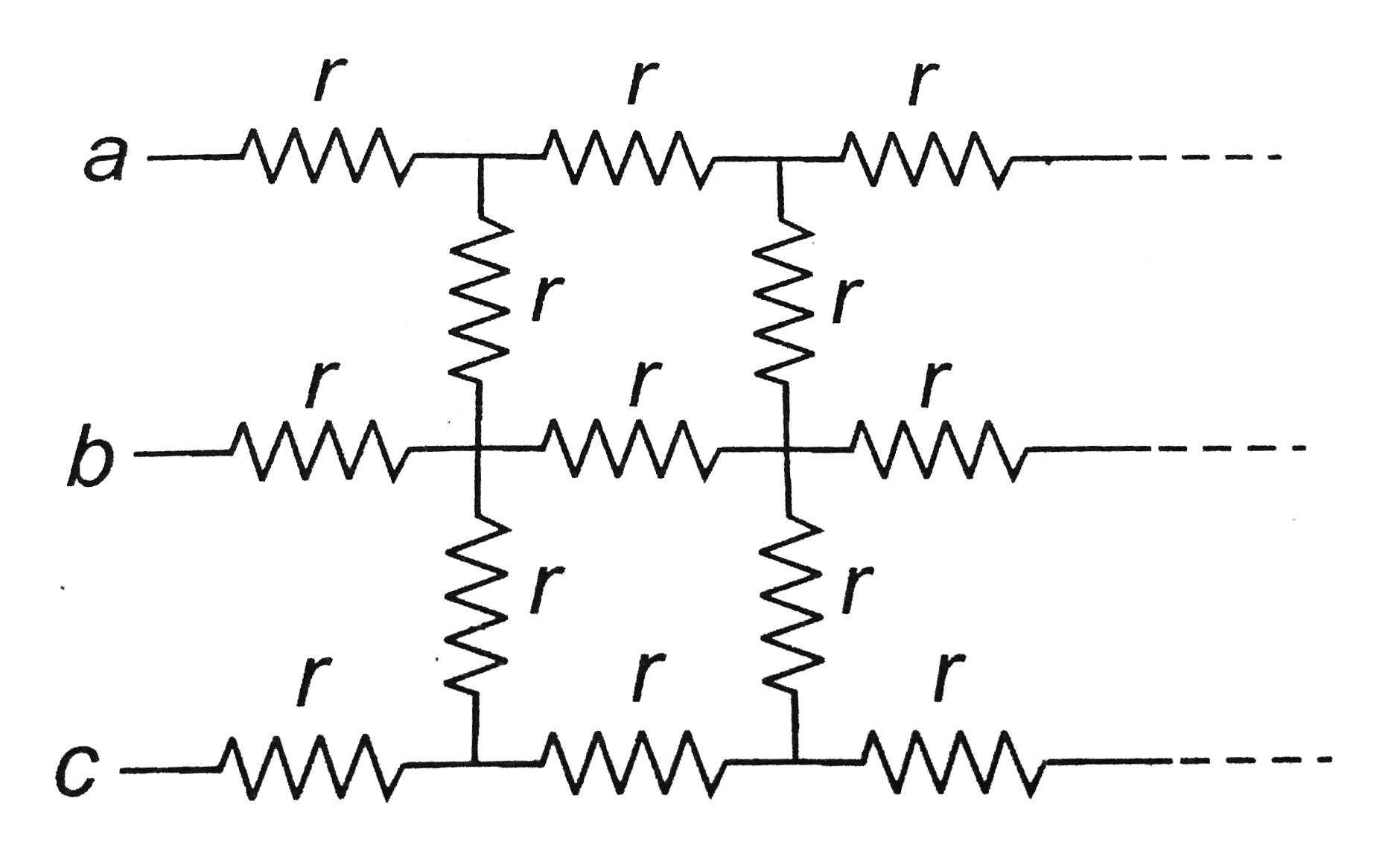
Video Solution
Text Solution
The correct Answer is:8
Due to symmetry, the line of resistors passing through b will be useless. So
req=2r+2rreq2r+req=(1+√5)r
=(√5+1)2(√5−1)=8Ω
|
Updated on:21/07/2023
Topper's Solved these Questions
- BOOK - CENGAGE PHYSICSCHAPTER - ELECTRIC CURRENT AND CIRCUITEXERCISE - Comprehension35videos
ELECTRIC CURRENT AND CIRCUIT
- BOOK - CENGAGE PHYSICSCHAPTER - ELECTRIC CURRENT & CIRCUITSEXERCISE - Kirchhoff s law and simple circuits15videos
ELECTRIC CURRENT & CIRCUITS
- BOOK - CENGAGE PHYSICSCHAPTER - ELECTRIC FLUX AND GAUSS LAWEXERCISE - MCQ s38videos
ELECTRIC FLUX AND GAUSS LAW
Similar Questions
Knowledge Check
- Question 1 - Select One
In the infinite gride. If the value of r=2(√5−1)Ω. Find the Equivalent resistance between the point a and c.
 A6(√5−1)ΩB4(√5−1)ΩC4ΩDnone of these
A6(√5−1)ΩB4(√5−1)ΩC4ΩDnone of these - Question 2 - Select One
Equivalent resistance between the points A and B (in Ω)
 .A15B114C213D312
.A15B114C213D312 - Question 3 - Select One
The equivalent resistance between A and B will be (in Ω)
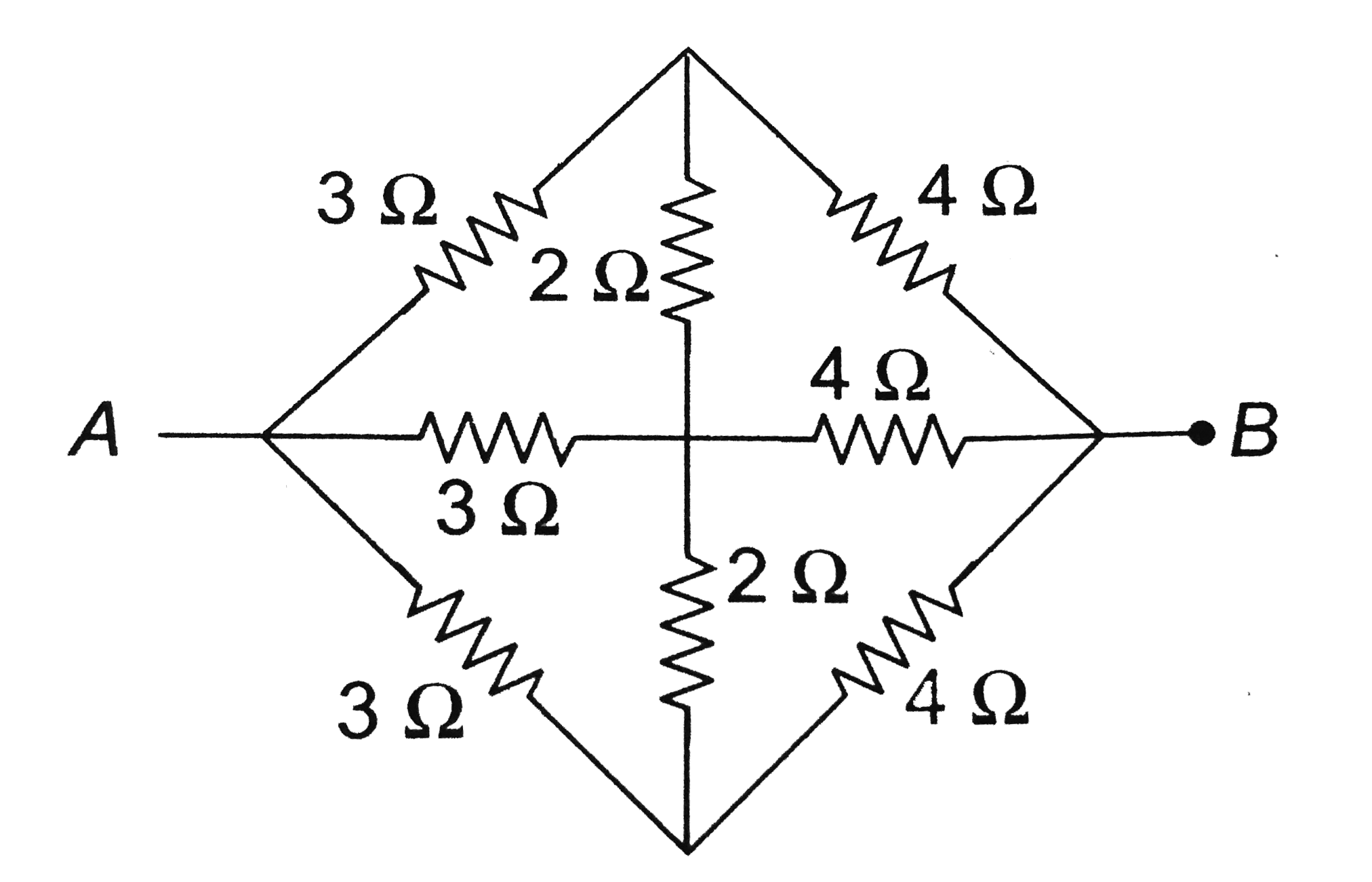 A2/7B8/7C4/3D7/3
A2/7B8/7C4/3D7/3
If the resistance of each branch of the circuit shown below is 1Ω , then the equivalent resistance of the circuit between the points A and B is
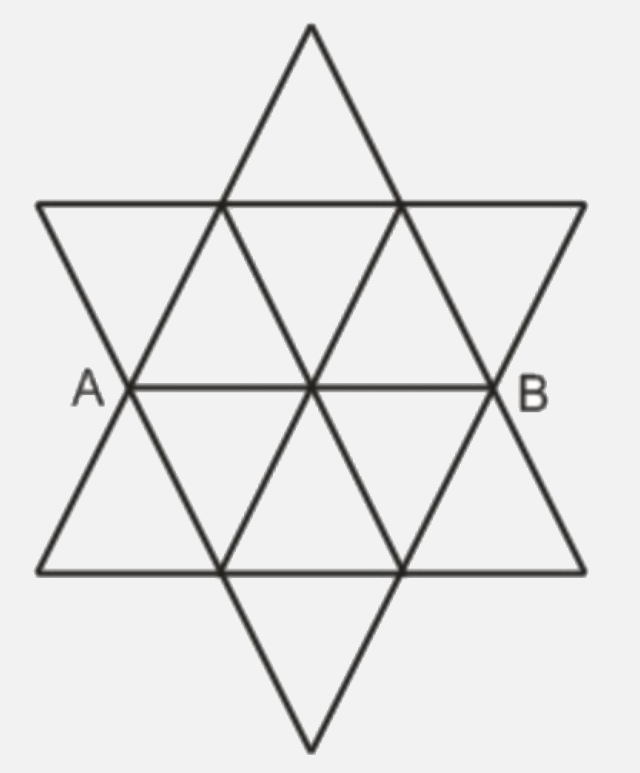 View Solution
View SolutionIn the circuit shown in figure R=55Ω the equivalent resistance between the point P and Q is
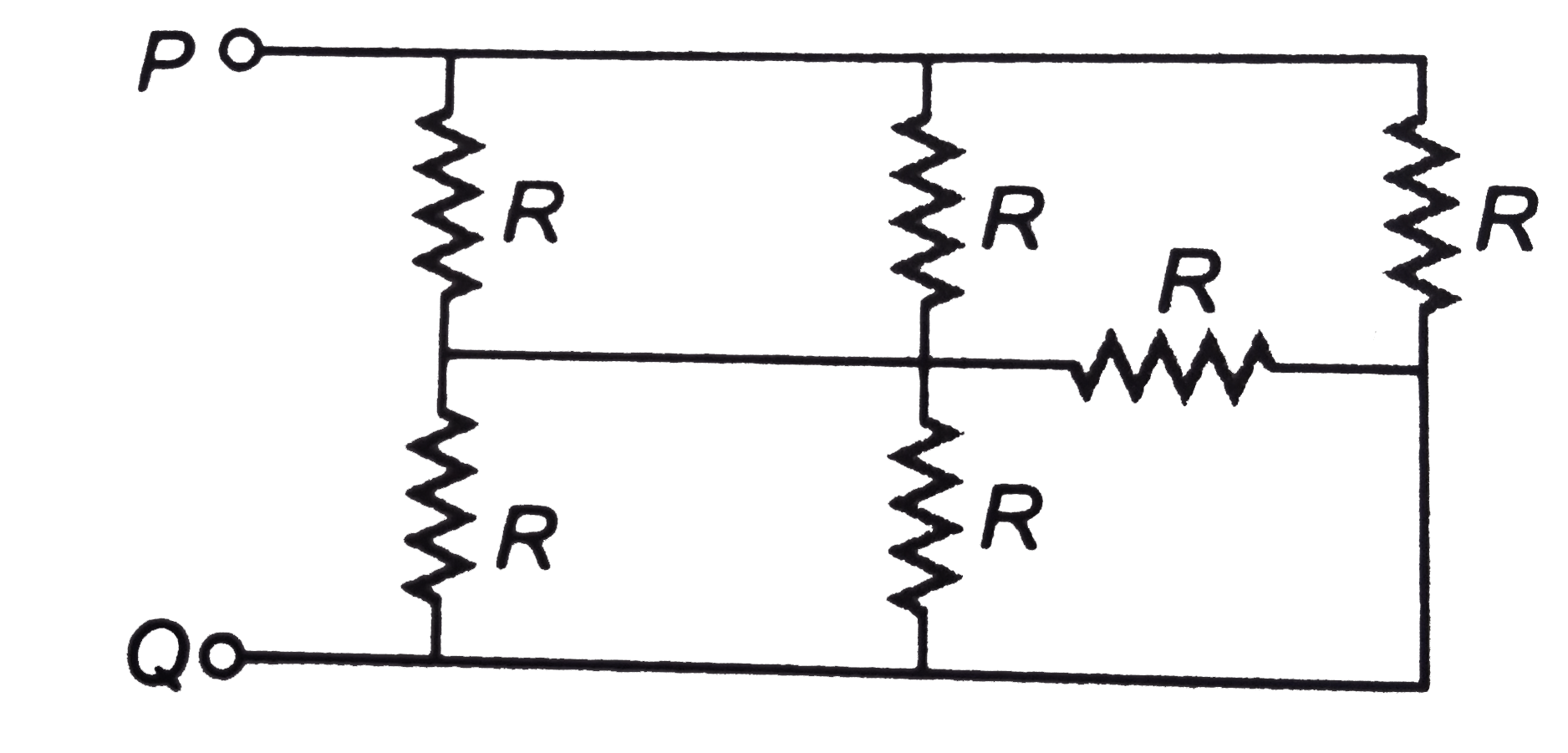 View Solution
View SolutionThe figure shows a network of resistor each having value 12Ω. Find the equivalent resistance between points A and B.
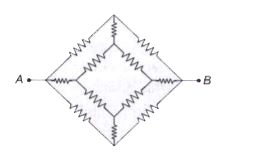 View Solution
View SolutionIn the given figure, R=3Ω. Determine equivalent
resistance between points A and B.
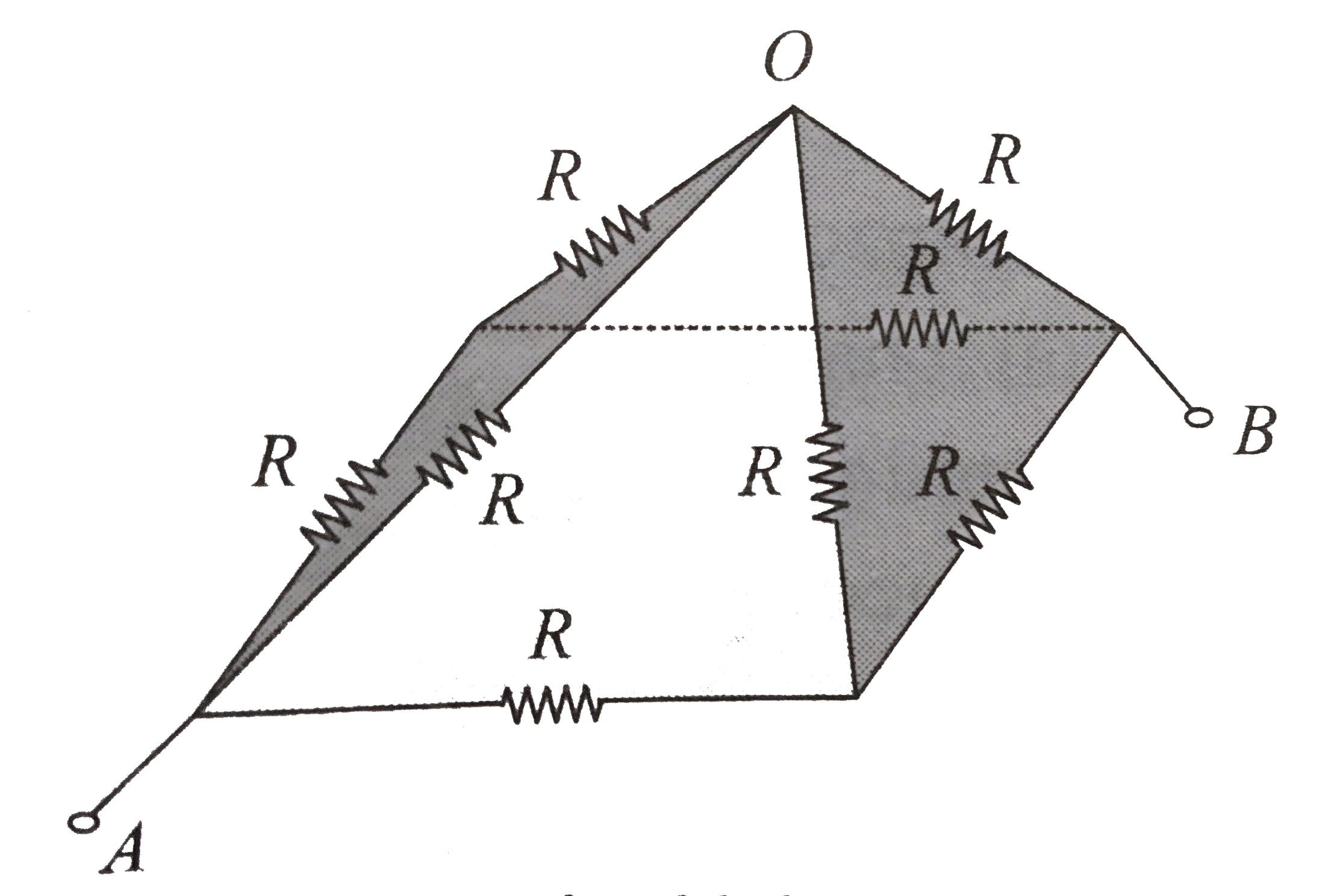 . View Solution
. View SolutionThe figure shows a network of resistor each heaving value 12Ω. Find the equivalent resistance between points A and B.
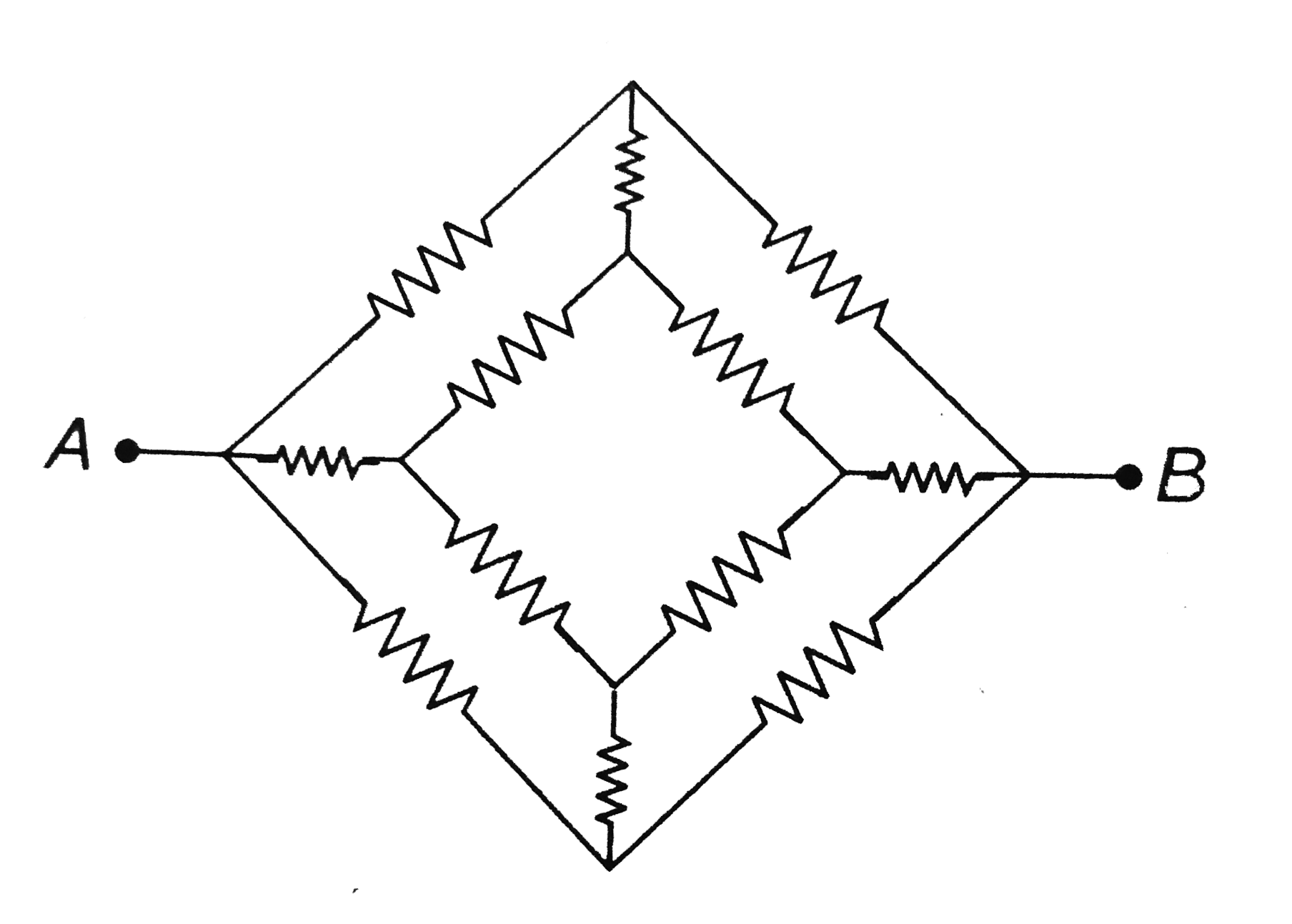 View Solution
View Solution


